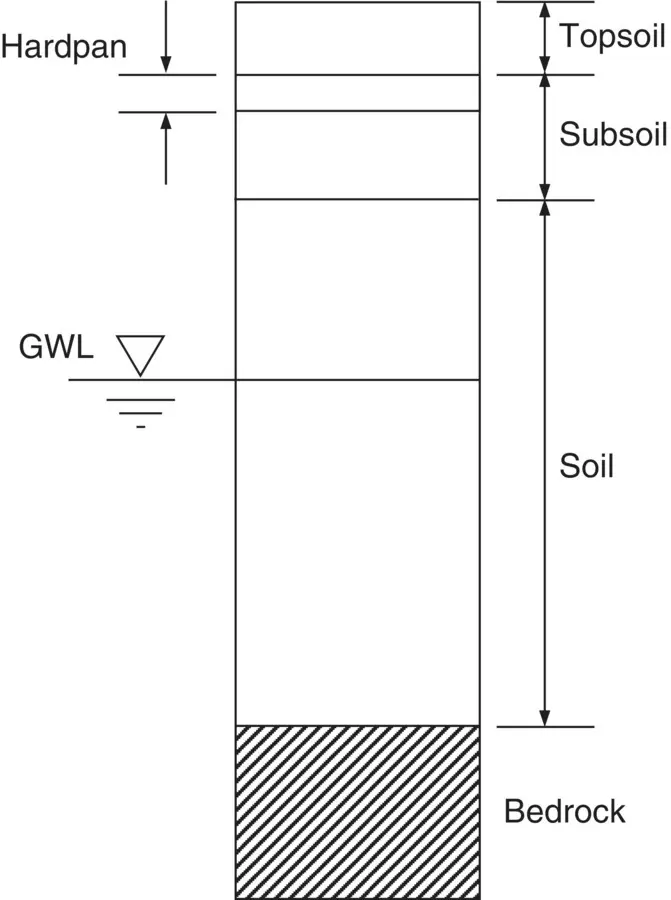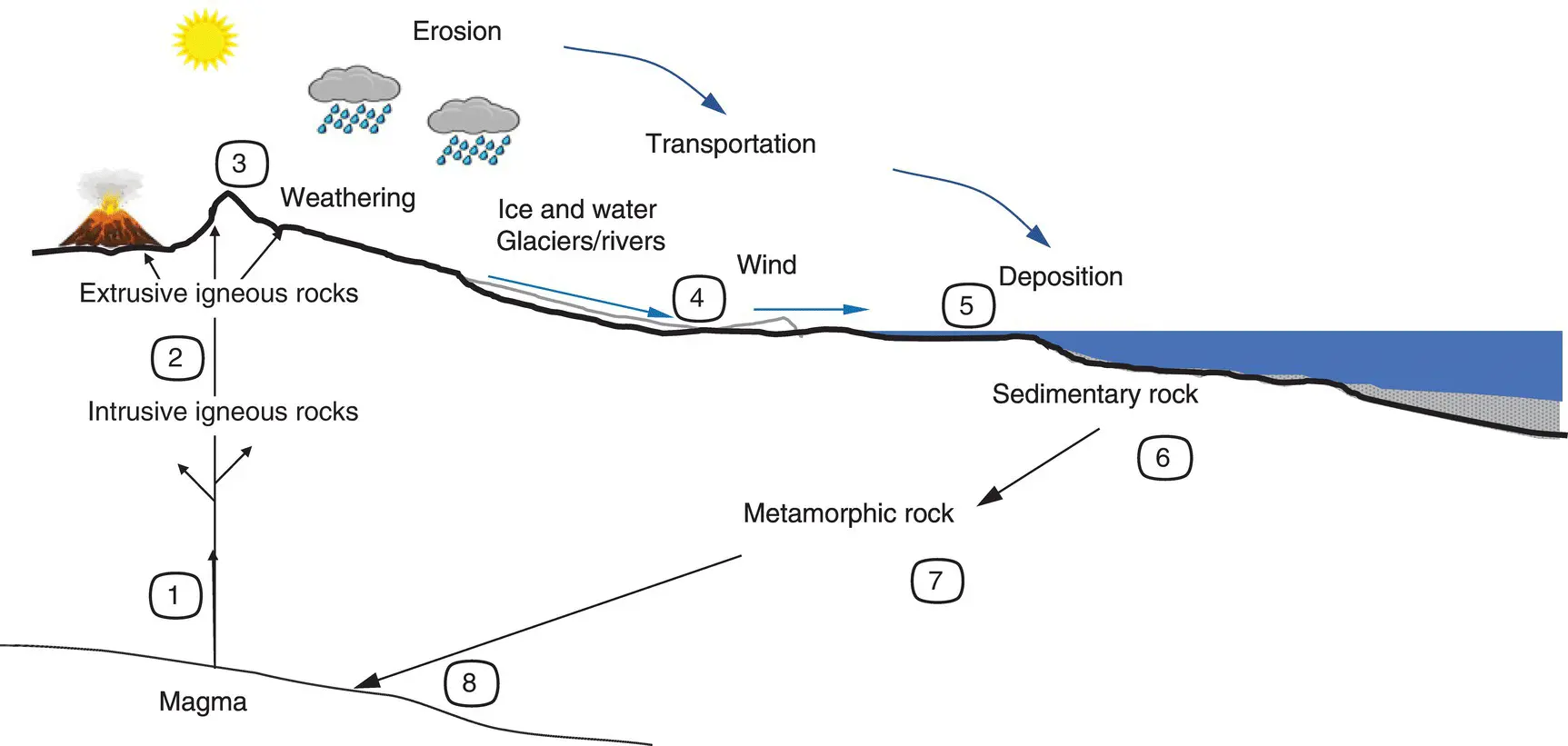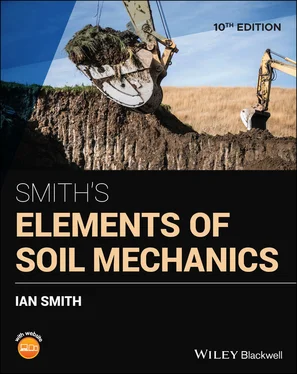The book's companion website www.wiley.com/go/smith/soilmechanics10eprovides you with resources and downloads to further your understanding of the fundamentals of soil mechanics and the use of Eurocode 7:

A suite of editable spreadsheets which map onto the worked examples in the book, showing how they are solved.
Solutions to the end‐of‐chapter exercises, including the full workings and accompanying spreadsheets.
Convenient tables with useful data and formulae.
Animations to demonstrate some of the more complex laboratory testing and geotechnical procedures.

Part I Fundamentals of Soil Mechanics
Chapter 1 Classification and Physical Properties of Soils
Learning objectives:
By the end of this chapter, you will have been introduced to:
the formation of rocks and soils;
clay soils and the field identification of soils;
the classification of soils;
various physical properties of soils and the relationships between them.
In the field of civil engineering, nearly all projects are built on to, or into, the ground. Whether the project is a structure, a roadway, a tunnel, or a bridge, the nature of the soil at that location is of great importance to the civil engineer. Geotechnical engineering is the term given to the branch of engineering that is concerned with aspects pertaining to the ground. Soil mechanics is the subject within this branch that looks at the behaviour of soils in civil engineering.
Geotechnical engineers are not the only professionals interested in the ground; soil physicists, agricultural engineers, farmers and gardeners all take an interest in the types of soil with which they are working. These workers, however, concern themselves mostly with the organic topsoils found at the soil surface. In contrast, geotechnical engineers are mainly interested in the engineering soils found beneath the topsoil. It is the engineering properties and behaviour of these soils, which are their concern.
1.1 Agricultural and engineering soil
If an excavation is made through previously undisturbed ground the following materials are usually encountered ( Fig. 1.1).
A layer of organic soil, usually not more than 500 mm thick, in which humus (highly organic partly decomposed vegetable matter) is often found.

Fig. 1.1 Materials encountered during excavation.
The portion of the Earth's crust affected by current weathering and lying between the topsoil and the unweathered soil below.
In humid climates, humic acid can be formed by rainwater causing decomposition of humus. This acid leaches out iron and alumina oxides down into the lower layers where they act as cementation agents to form a hard, rock‐like material. Hardpan is difficult to excavate and, as it does not soften when wet, has a high resistance to normal soil drilling methods. A hardpan layer is sometimes found at the junction of the topsoil and the subsoil.
The soft geological deposits extending from the subsoil to bedrock constitute soils. In some soils, there is a certain amount of cementation between the grains, which affects the physical properties of the soil. If this cementation is such that a rock‐hard material has been produced, then the material must be described as rock. A rough rule is that if the material can be excavated by hand or hand tools, then it is a soil.
Beneath the soil, rock is encountered. This rock is often referred to as bedrock and the horizon at which the soil meets the rock is known as the rockhead .
A reservoir of underground water. The upper surface of this water may occur at any depth and is known as the water table or groundwater level (GWL).
Rocks and soils are formed within a geological process known as the rock cycle ( Fig. 1.2). The process is continuous and has lasted for millions of years.
1 Magma (molten rock) rises towards the surface, cooling and solidifying along the way.
2 The magma crystallises beneath or above the Earth's surface forming igneous rocks.
3 At the surface, rocks undergo physical and chemical weathering which break down the parent rock into particles.
4 The rock particles (sediments) are moved downslope and transported by glaciers, rivers and wind. The combined processes of weathering and transportation are referred to as erosion.
5 Eventually the sediments are deposited in oceans and floodplains, where they undergo lithification: the process where the particles are compressed under great pressure over time to form rock.
6 Sedimentary rocks are formed.
7 If the sedimentary rock is subjected to further great pressures and heat, it will react and change to a metamorphic rock.
8 Metamorphic rocks subjected to very high pressure or temperature, liquefy into magma that eventually crystallises into igneous rock, and the cycle starts again.

Fig. 1.2 The rock cycle.
Rocks are made from various types of minerals. Minerals are substances of crystalline form made up from a particular chemical combination. The main minerals found in rocks include quartz, feldspar, calcite and mica. We can classify all rocks into three basic groups: igneous , sedimentary and metamorphic . The position of each within the rock cycle is shown in Fig. 1.2.
These rocks have become solid from a melted liquid state. Extrusive igneous rocks are those that arrived on the surface of the Earth as molten lava and cooled. Intrusive igneous rocks are formed from magma that forced itself through cracks into the rock beds below the surface and solidified there.
Examples of igneous rocks: granite, basalt, gabbro .
Weathering reduces the rock mass into fragmented particles, which can be more easily transported by wind, water and ice. When dropped by the agents of weathering, they are termed sediments . These sediments are typically deposited in layers or beds called strata and when compacted and cemented together through lithification, they form sedimentary rocks.
Examples of sedimentary rocks: shale, sandstone, chalk .
Metamorphism through high temperatures and pressures acting on sedimentary or igneous rocks produces metamorphic rocks. The original rock undergoes both chemical and physical alterations.
Examples of metamorphic rocks: slate, quartzite, marble .
Читать дальше
















